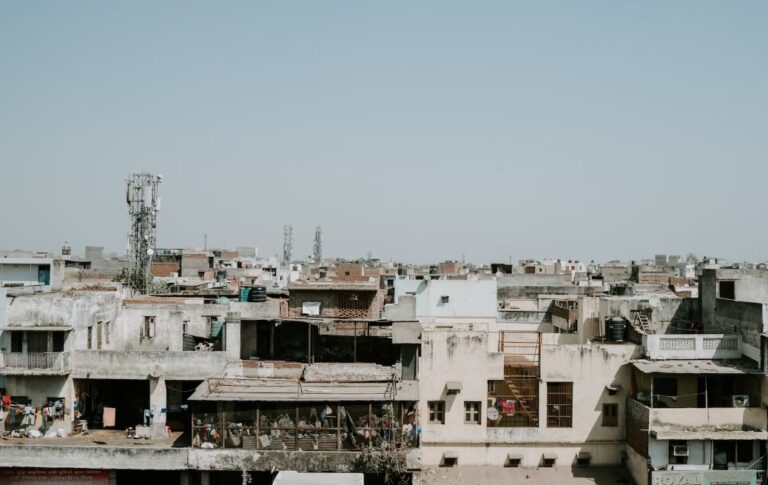In 2023, the global economic scene starkly contrasts wealth and poverty. This guide focuses on the poorest countries in the world, emphasizing the importance of GDP per capita as a key economic measure. GDP per capita represents the average economic output per person, which is crucial for understanding each nation’s standard of living.
However, this figure doesn’t fully capture living costs or inflation variations. Thus, Purchasing Power Parity (PPP) is also considered, offering a more accurate picture of living standards. The International Monetary Fund’s latest data reveals countries like South Sudan, Burundi, and Central African Republic as the poorest in 2023.
These nations, from smaller to larger ones like the Democratic Republic of the Congo and Mozambique, face challenges like limited resources, political instability, and weak infrastructures, contributing to their economic difficulties. Let’s explore the underlying causes of these challenges in the world’s poorest countries.
Table of Contents
Poorest countries in the world: a closer look
1. South Sudan
- GDP: $3.9 billion.
- Population: 11.1 million
South Sudan, emerging as the world’s youngest country in 2011, faces severe economic hurdles. Political unrest and conflicts, coupled with insufficient infrastructure, severely hamper its growth. Most of its population relies on agriculture, but frequent violence and harsh climate events disrupt farming, deepening poverty in this landlocked nation.
2. Burundi
- GDP: $3.4 billion.
- Population: 13.3 million
Burundi, a small landlocked country in East Africa, wrestles with socio-economic difficulties like political instability and conflict. Rapid population growth and a heavy reliance on subsistence farming exacerbate food insecurity. These factors make Burundi one of the poorest countries, struggling with infrastructure and economic development.
3. Central African Republic (CAR)
- GDP: $2.2 billion.
- Population: 5.8 million
The CAR, despite its rich deposits of gold, oil, uranium, and diamonds, suffers from widespread poverty. Political instability, armed conflicts, and poor infrastructure contribute significantly to its economic woes. Recent global events and environmental challenges like flooding and drought have intensified the CAR’s struggles, marking it as one of the poorest countries.
4. Somalia
- GDP: $7.5 billion.
- Population: 18.2 million
Somalia, located in the Horn of Africa, is plagued by political instability, conflicts, and humanitarian crises. The absence of a robust central government and inadequate infrastructure perpetuate widespread poverty, making it one of the poorest countries.
5. Democratic Republic of the Congo (DRC)
- GDP: $42.6 billion.
- Population: 102.6 million
The DRC, despite its abundance of natural resources like cobalt and copper, faces stark economic challenges. A significant portion of its population lives in poverty, with issues like malnutrition, limited access to education and healthcare, and high fertility rates further hindering development. These factors position the DRC prominently among the world’s poorest countries.
6. Mozambique
- GDP: $3.3 billion.
- Population: 34 million
Mozambique, a resource-rich but sparsely populated country, struggles with poverty due to natural disasters, disease, and rapid population growth. Its wealth in resources contrasts with low agricultural productivity and significant wealth inequality. Insurgent attacks in the north exacerbate the situation, keeping Mozambique among the poorest countries.
7. Niger
- GDP: $9.2 billion.
- Population: 27.3 million
As a landlocked country in West Africa, Niger confronts high poverty rates. Its challenges stem from limited natural resources, frequent droughts, and reliance on small-scale agriculture. With most of its territory covered by the Sahara, desertification poses a severe threat, marking Niger as one of the poorest countries.
8. Malawi
- GDP: $6.9 billion.
- Population: 21 million
Despite its scenic landscapes, Malawi in southeastern Africa faces economic difficulties. Reliant on rain-fed agriculture, it’s vulnerable to climate change and fluctuating commodity prices. Efforts to diversify the economy and improve education and healthcare are underway, but Malawi remains among the poorest countries.
9. Chad
- GDP: $10.9 billion.
- Population: 18.3 million
Chad, despite its substantial oil reserves, experiences high poverty levels. Dependence on agriculture, susceptible to weather changes, leads to food insecurity. Concerns over human rights abuses and political repression add to its challenges, placing Chad prominently among the poorest countries.
10. Liberia
- GDP: $10.9 billion.
- Population: 5.4 million
Liberia’s poverty is rooted in its history of conflict and disease outbreaks, leading to unstable infrastructure and limited services. Disruptions in agriculture contribute to food insecurity. Efforts by international organizations aim to alleviate poverty and improve the future through sustainable development, education, and healthcare initiatives, but Liberia remains one of the poorest countries.
Read also: The countries with the highest national debt burden globally












